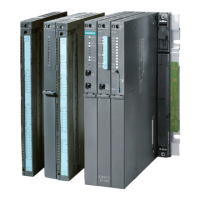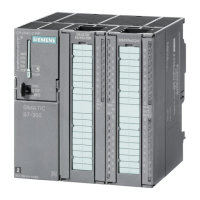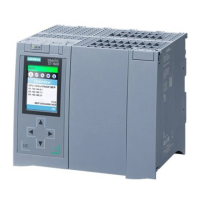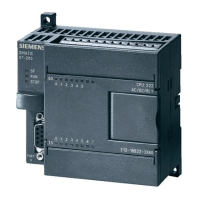Wiring the S7-400
4-43
S7-400 and M7-400 Programmable Controllers Hardware and Installation
A5E00069481-04
4.23 Routing Cables Using Cable Ducts or Fan
Subassemblies
Cable Routing
Depending on the number of cables and plug-in lines merging at the particular
rack, the cross-section of the cable duct or fan subassembly may not be sufficient
to accept all cables.
You should therefore route half the cables toward each side via the cable duct or
fan subassembly.
Securing Cables
There are eyes for securing cables on both sides of the cable duct or fan
subassembly (see Reference Manual Module Specifications, Chapter 6). You can
secure the cables to these eyes with cable ties, for example.
Shield Contact
The cable duct and fan subassembly offer the facility of electrical contact for cable
shields. You can use the shield clamps provided
(see Reference Manual Module Specifications, Chapter 6).
To establish contact for the cable shields, strip the outer insulation in the region of
the shield clamp, and trap the cable shield under the shield clamp.
4.24 Routing Cables Using Fiber-Optic Cables
Cable Routing
Indoor fiber-optic cables (for example, for connecting synchronization submodules)
are permitted for use in buildings, cable ducts, and channel trunking.
The maximum strain load when assembling is 1000 N and during operation 150 N.
Bending Radius
When laying cables, you should maintain the following minimum bending radii:
• Next to connector: 55 mm
• Otherwise: 30 mm

